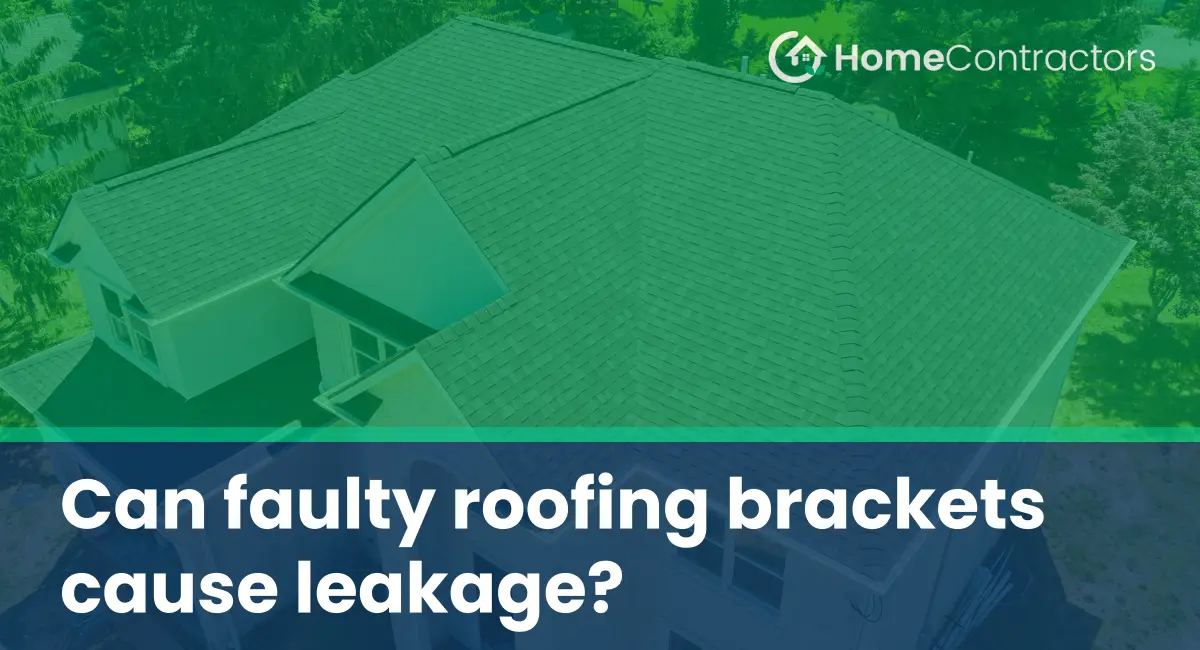A roof is one of the most vital components of any building, providing shelter and protection from the elements. One crucial aspect of a roof’s stability is the sturdy support it receives from roofing brackets. These brackets play a significant role in ensuring the structural integrity of the roof. However, when these brackets become faulty, it can lead to potential problems such as leakage. In this article, we will delve into the connection between faulty roofing brackets and leakage, exploring the causes and potential solutions.
Understanding Roofing Brackets:
Roofing brackets, also known as roof truss brackets or roof hangers, are metal components that connect the roof structure to the walls of a building. They provide stability and support to the roof by securing the rafters or trusses firmly to the walls. Roof brackets come in various sizes and designs depending on the specific roofing system and the load-bearing requirements.
The Relationship Between Faulty Brackets and Leakage:
1. Misaligned or Damaged Brackets:
One common issue that can lead to leakage is when roofing brackets become misaligned or damaged. Over time, brackets can shift or become weakened due to factors like uneven settling of the building or excessive loading. If a bracket is not properly aligned or suffers from structural damage, it may fail to adequately support the rafters, which can lead to sagging or displacement. This displacement can cause gaps between the roofing materials, creating points of entry for water during rainfall or snowmelt.
2. Inadequate Sealing:
Another potential cause of leakage related to faulty roofing brackets is inadequate sealing. When brackets are not properly sealed against the roof’s covering material, such as shingles or tiles, water can seep through the gaps. This leakage can occur even if the brackets themselves are structurally sound. Therefore, it is essential to ensure that the interface between the bracket base and the roofing material is properly sealed, preferably with a waterproofing membrane or flashing.
3. Compromised Roofing System:
A faulty roofing bracket can have a cascading effect on the entire roofing system. If one bracket fails or becomes weakened, it can impose excessive stress on the adjacent brackets, compromising their integrity as well. As a result, the entire roof structure can become less stable, increasing the likelihood of leakage. Regular inspections and maintenance should be conducted to identify and address any faulty or weakened roofing brackets promptly.
Addressing Faulty Roofing Brackets:
1. Repair or Replacement:
When faulty roofing brackets are identified, it is crucial to address the issue promptly to prevent further damage and leakage. In some cases, minor repairs, such as realigning or reinforcing brackets, may be sufficient. However, if brackets are severely damaged or weakened, replacement might be necessary. Consulting a professional roofing contractor is recommended to ensure proper inspection, assessment, and repair/replacement procedures.
2. Waterproofing Measures:
To mitigate the risk of leakage caused by faulty roofing brackets, it is essential to implement proper waterproofing measures. This includes ensuring a watertight seal at the interface between the brackets and the roof covering material. Waterproofing membranes or flashing should be installed to prevent water infiltration through gaps or joints.
Faulty roofing brackets can indeed cause leakage if left unaddressed. Misaligned, damaged, or inadequately sealed brackets can compromise the integrity of the roofing system, leading to water infiltration during periods of precipitation. Regular inspections and maintenance, along with prompt repairs or replacements, are crucial to safeguarding the stability and waterproofing of a roof. By addressing faulty roofing brackets, one can ensure the longevity and performance of a building’s roof.
